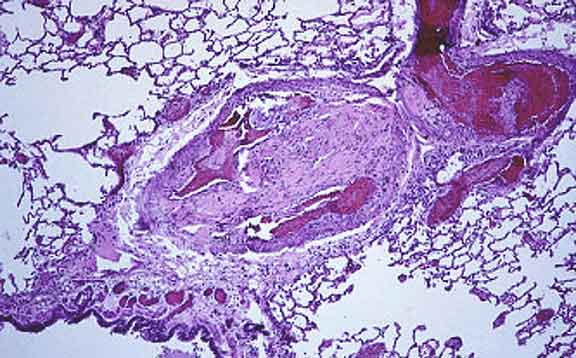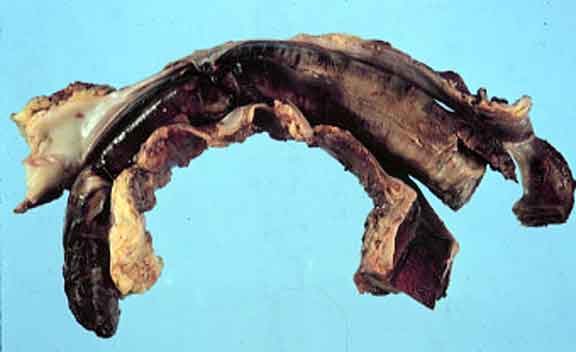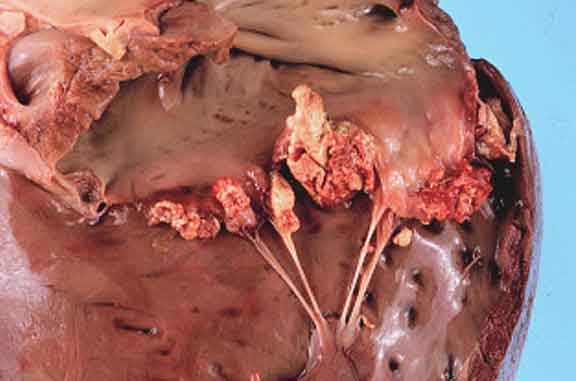Introduction
Thrombosis
Thrombosis is the formation within blood vessels of a solid mass derived from blood
constituents. It is the result of inappropriate activation
of the normal haemostatic mechanisms. Thrombosis is always pathological.
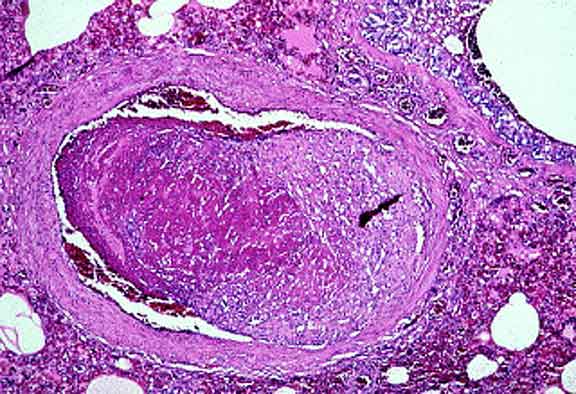
An incompletely occlusive thrombus in a pulmonary artery
in a horse. Note how the thrombus is anchored to the vessel wall on the
right hand side.
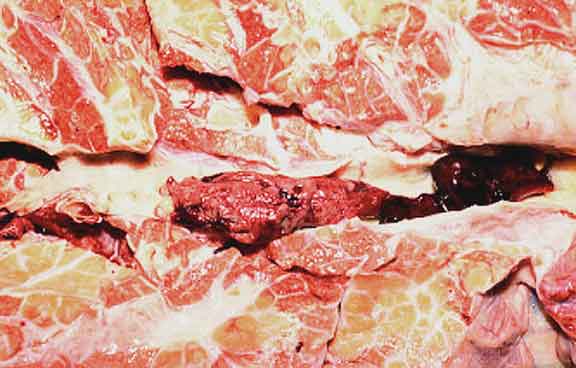
A thrombus within a pulmonary artery in a cow. Note that most of the thrombus is pale and has a rough surface, features typical of an arterial thrombus. The free-floating downstream tail of the thrombus is dark red and composed of whole clotted blood.
An organising thrombus within the jugular vein of a horse. Venous thrombi are typically occlusive and rapidly propagate. Because of their flimsy attachment to the vessel wall and long downstream tails, venous thrombi commonly give rise to thromboemboli.
Vegetative valvular endocarditis. In domestic animals, these lesions are usually the result of a sustained or repetitive bacteraemia with bacterial localisation on the valves, subsequent endothelial (endocardial) damage and thence thrombosis.
Evolution of a Thrombus:
-
Fibrinolysis = dissolution of a recently formed thrombus by lysis of fibrin catalysed by plasmin.
-
Propagation = growth of a thrombus by further coagulation occurring on its surface.
-
Thromboembolism = fragmentation of the tail of a thrombus with spread of the fragment downstream via the blood.
-
Organisation = repair of a thrombus by means of fibroplasia/fibrosis, re-endothelialisation and recanalisation.
